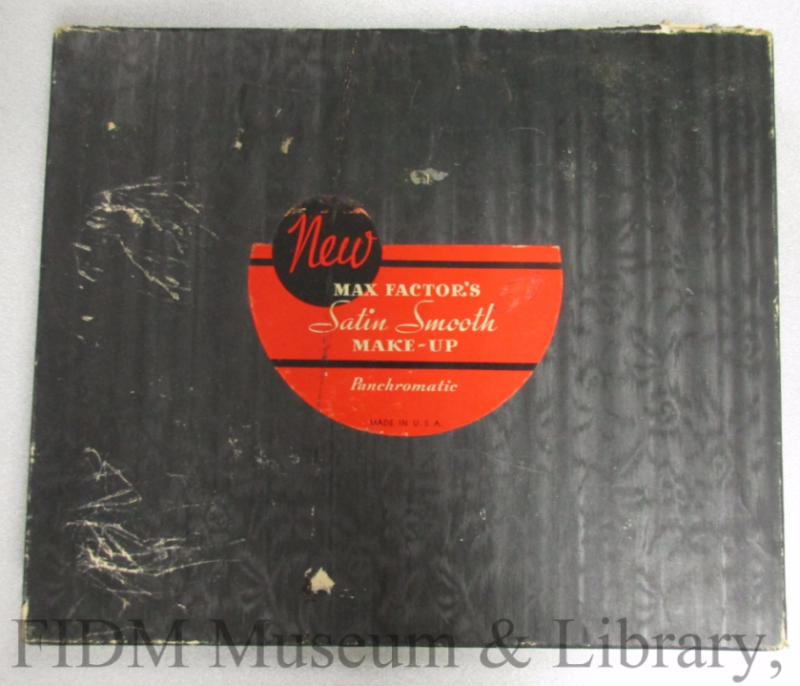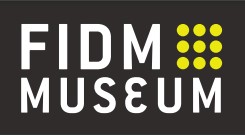The name Max Factor is synonymous with beauty, Hollywood, and glamour. As an inventor, he created a new formula of makeup adored by movie stars and school teachers alike. As a businessman, he changed the way women viewed cosmetics forever. One of the most important names in beauty, and “the first to start manufacturing makeup on a large scale for regular women, Max Factor is rightfully credited with defining the makeup industry as we know it today.”[1]
Maksymillian Faktorowicz grew up in Lodz, Congress Poland (a sovereign state that was once the Russian part of Poland) in the late 19th century. Born with a natural artistic ability, he took on an apprenticeship with a wig maker as a young boy. After honing his cosmetic expertise with local theaters and performers, he was just a teenager when he began a job with the Russian Grand Opera. Factor’s craft was so celebrated that he eventually worked under Czar Nicholas in the Royal Household. [2] Wanting to escape Russia’s anti-Semitic laws and protect his secret marriage, Factor and his wife and three children left the country in 1904. After a brief stint in St. Louis – where he displayed wigs and cosmetics at the city's 1904 World's Fair – the family landed in Los Angeles in 1908.[3]
In the burgeoning years of the film industry, actors applied their own makeup, mostly adapted from theater greasepaint. This formula was unsuited to the world of cinema – it was thick and uncomfortable to wear, and did not last under the harsh lights and long hours of a film shoot.[4] Factor revolutionized movie makeup with the 1914 introduction of Supreme Greasepaint, a flexible makeup made just for film actors that came in twelve shades and a tube for easy application. This was just the first of many innovations Factor produced in Hollywood; in 1918, he released Color Harmony, makeup made in a variety of shades to suit a combination of hair colors and skin tones. Color Harmony was remarkably inclusive for its time, as it was the first mass-market makeup suitable for women of different ethnicities.[5]
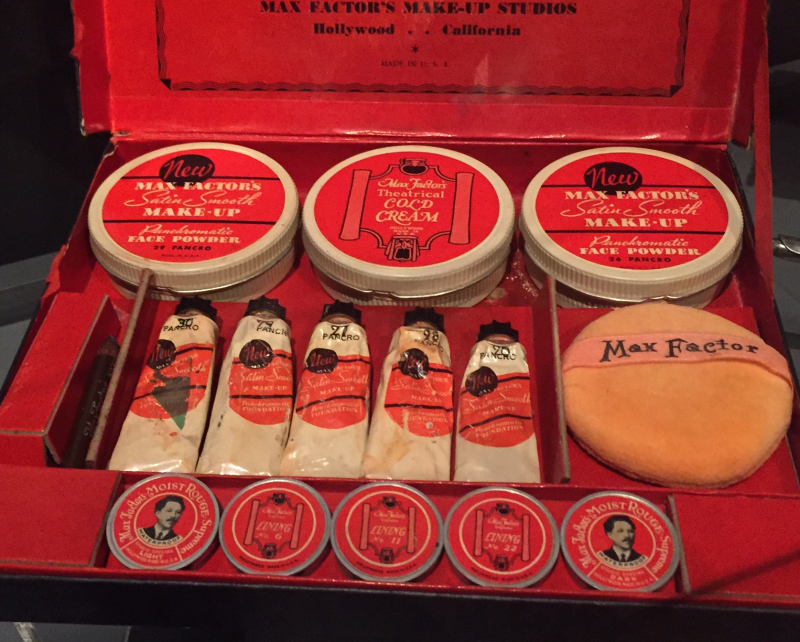 Makeup Set, 1928
Makeup Set, 1928
Gift of Jay Hampel
2016.801.2A-II
Factor single-handedly altered the reputation of cosmetics from something viewed as tacky and tawdry to a luxurious and elegant product. The FIDM Museum’s Exotica: Fashion & Film Costume of the 1920s exhibition currently features a 1928 Max Factor “Satin Smooth” makeup kit, with powder, cold cream, foundation, and rouge. Erika Thomas, author of Max Factor and Hollywood: A Glamorous History, recently shed light onto who would have purchased this type of kit. Because of the branding and consistency of the makeup, Thomas concluded it was made for theater actors who would do their own performance makeup. Below, Thomas reveals more about Max Factor's impact on the world of cosmetics:
Can you tell us more about the 1928 makeup kit we have on display in our gallery?
My first thought when I saw it was that it reminded me of the early makeup kits Max Factor created that that he used on set. He revolutionized the entire act of meeting the actors on set and doing their makeup. He ushered in the entire practice of doing that. Some kits were more elaborate. Some stars wanted them in a simple box, others wanted theirs in a more elaborate case.
 Max Factor and actress Dorothy Phillips with one of the company's film makeup kits, 1926. Photo courtesy of Marc Wanamaker and Erika Thomas, Max Factor and Hollywood, page 21.
Max Factor and actress Dorothy Phillips with one of the company's film makeup kits, 1926. Photo courtesy of Marc Wanamaker and Erika Thomas, Max Factor and Hollywood, page 21.
How did Max Factor come up with his branding and packaging?
He worked with a company called Sales Builders to distribute the makeup, but he started with a small team. It was his son, and a small team of marketing. But originally, when he first came to Los Angeles, his sons and daughters were the ones who put the labels on the jars and they would pour the makeup – it was a hand operation, a family operation. That was in the beginning. By the late 20s, by the time he was travelling to set to make up the actors and actresses, it was a pretty streamlined operation.
When did Max Factor first start selling to the public?
That would have been in the 1920s. First of all, actresses were advertising in Motion Picture and Photoplay, the magazines of the day. Women were going to the movies week after week, and they were see these beautiful faces, these images on screen, and they started to think wait a second – I want to look like that! I want those lips, I want those eyebrows. At the time, it hadn’t been very acceptable for everyday women to wear makeup. But because Max Factor was advertising in these magazines and women were reading it, he was able to launch Society MakeUp in the 1920s. He called it Society MakeUp because the name Society connotes an upper crust, a wealthier, classier person. Before, makeup was thought of as tacky and vulgar to wear. You wouldn’t wear makeup on the street. He made it acceptable because women wanted to be like the stars. In these magazines, there would be an order form and suddenly women thought, ‘I can have Max Factor delivered from Hollywood right to my front door step in Kansas!’
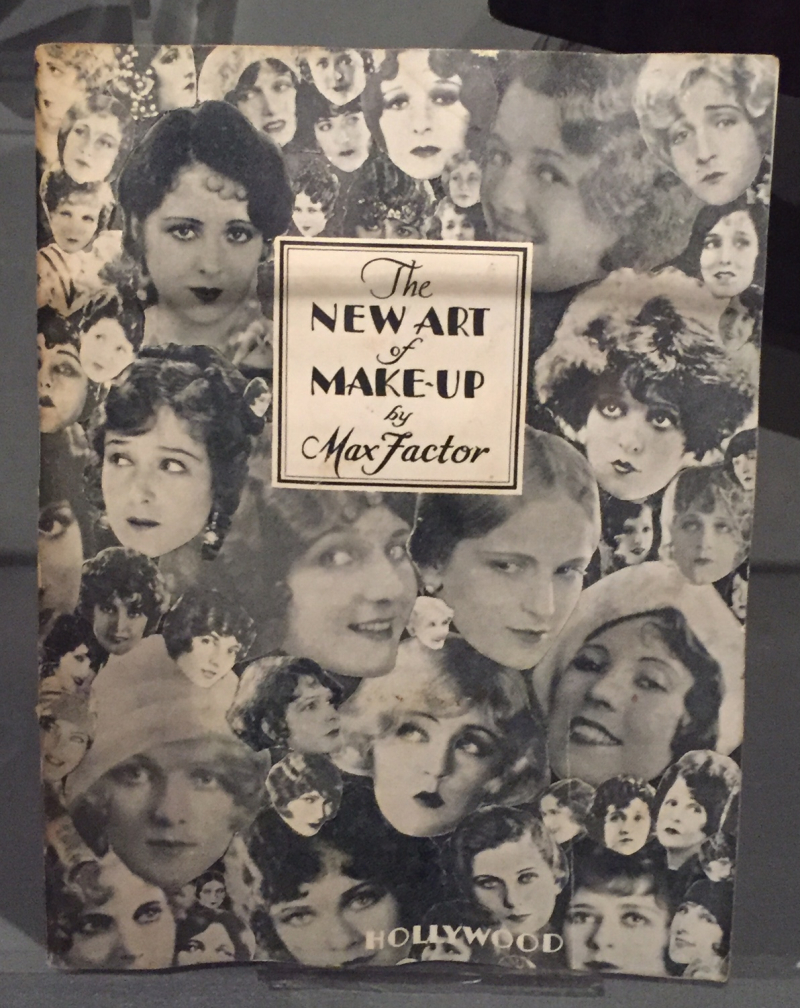 Promotional pamphlet with application instructions included in makeup kit.
Promotional pamphlet with application instructions included in makeup kit.
Do you see makeup advertised or worn before then?
No, it was just for motion picture performers and theater performers. It was very tacky. It’s hard to get your mind around that today. The beauty industry is a billion dollar industry – the industry of industries! Everything cosmetic you can find is out there. There’s such a focus on beauty and makeup and enhancements. But back then, it was without taste. With the opening of the Max Factor makeup studio at Hollywood and Highland came a real shift in the acceptability because he put this beautiful makeup studio in on the ground floor. It was where the movie stars went, but he had these beautiful display windows. When you walked up Highland Avenue, you could see these beautiful products, they were packaged beautifully – they were tantalizing! He made it acceptable. Everyday women could go in – school teachers, secretaries – not just movie stars.
What about the price? Was that something that was accessible as well?
It was pretty affordable. There are a couple of ads in the book that show the price, and I do have another price list in there that reflect the prices. It was accessible. I think he made it accessible for everyone in every way, cost included.
How did you start the process of writing this book? What got you interested in Max Factor?
Marc Wanamaker, who provided the images for the book, is an archivist and historian. I had worked with him because he provided images for some of the pieces I had written for various print magazines. So and that’s how I had got to know him. I did an article for LA Confidential magazine in 2014 about Max Factor and the Hollywood Museum. I asked him Marc if he had enough pictures to do a book. He had over 300 images, and he gave me access to his entire collection.
Have you always been interested in beauty?
I saw the movie Some Like it Hot when I was about 8 years old. In watching that movie, I never got over it! I just never got over the glamour and the beauty, how beautiful Marilyn Monroe was. It made me want to become an actress, and I was an actress for many years. It’s always been an interest of mine. When I was growing up, my mom had pictures of my grandmother and my aunt in the 1940s and 1950s and they were beautiful! Beautiful finger nails, and hair done, and dresses with shoulder pads. I always had that influence and I was always interested!
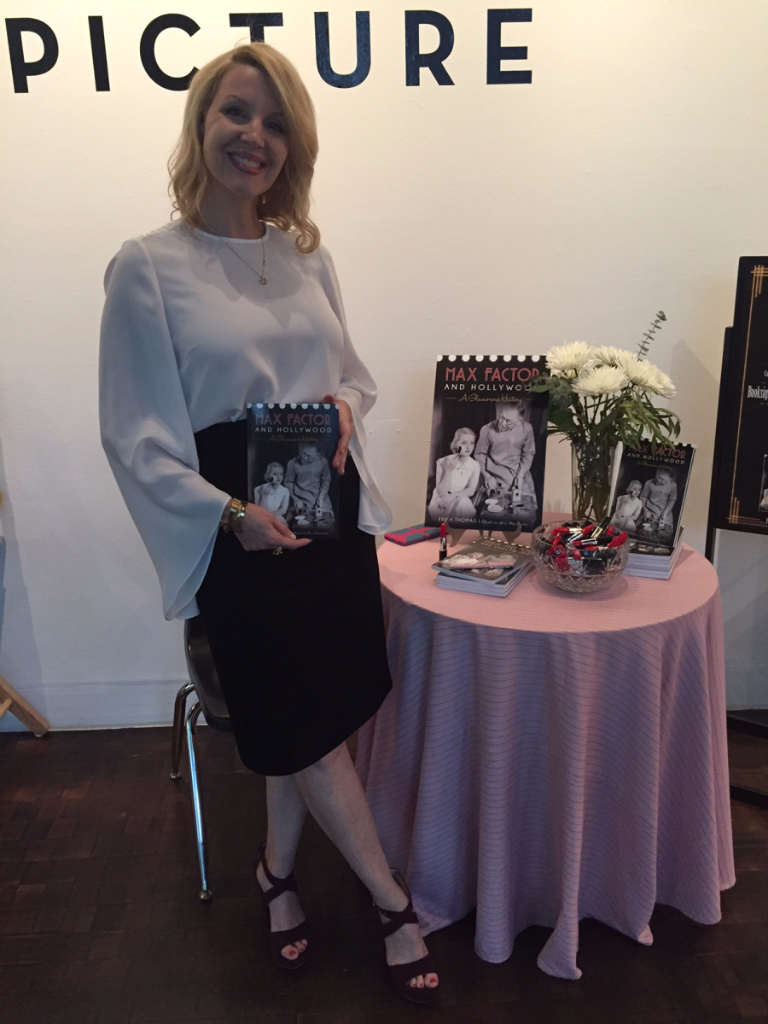
Erika Thomas, author of Max Factor and Hollywood: A Glamorous History, at a book signing at the FIDM Museum.
[1] Lisa Eldridge, Face Paint: The Story of Makeup (New York: Abrams Image, 2015), 127.
[2] Erika Thomas, Max Factor and Hollywood: A Glamorous History (Charleston: They History Press, 2016), 16.
[3] Ibid., 17.
[4] Ibid., 26.
[5] Ibid., 31.

